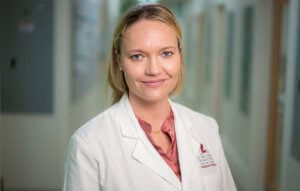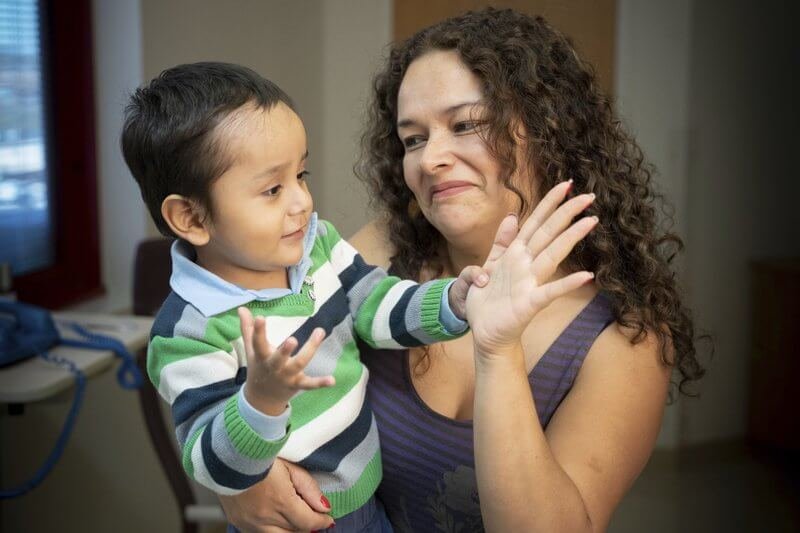In a positive stride forward, researchers at St. Jude Children’s Research Hospital used a new gene therapy that successfully treated infants with “bubble boy” disease in a clinical trial. Their findings have been published in the New England Journal of Medicine [April 17].
“This research is an exciting milestone because we can announce a cure,” said Dr. James Downing, president and CEO of St. Jude Children’s Research Hospital.
What is Severe Combined Immunodeficiency (SCID)?
SCID is a group of disorders that affects immune cell development in newborns, making them highly susceptible to infections. SCIDs are categorized based on the gene that is mutated. Among them is X-linked severe combined immunodeficiency (SCID-X1), which is caused by a mutation in the gene coding for the γ-chain of cytokine receptors that are essential for the development and function of immune cells. Infants diagnosed with SCID-X1 were the focus of the reported study.

Ewelina Mamcarz, M.D., of the St. Jude Department of Bone Marrow Transplantation and Cellular Therapy and first and corresponding author of this study, describes the quality of life of these babies. Once diagnosed by newborn screening in the U.S., these babies are immediately placed in protective isolation, according to Dr. Mamcarz. Some require multiple medications, breathing tubes, and end up spending several early months in the hospital, she added.
“We need to protect them from infections, as a simple common cold virus can kill them. They cannot have any contact with the outside world because that is a huge risk for infection,” Dr. Mamcarz explained.
Doctors have focused for decades on finding therapies that would improve the quality of life for these children. Currently, bone marrow transplantation from a sibling is a standard therapy procedure for SCID. But about 80% of children do not have this option. Transplants from other donors are possible but risk graft rejection side effects.
Given the limitations of donor transplants, an alternative that relied solely on the patient’s own cells seemed a lucrative option. Gene therapy is just that.
 Stem cells from the bone marrow have the ability to generate immune cells. As the gene mutation in SCID-X1 is known, stem cells from the bone marrow of patients could be harvested, edited to correct the mutation, and reinserted back into patients. In fact, in 2000, gene therapy was tested in SCID-X1 patients, and even seemed to restore immunity. But the retroviral vector (used to deliver the normal gene in cells) accidentally triggered leukemia in some of the patients. The therapy was halted after this terrible side effect, and research in the whole field stalled.
Stem cells from the bone marrow have the ability to generate immune cells. As the gene mutation in SCID-X1 is known, stem cells from the bone marrow of patients could be harvested, edited to correct the mutation, and reinserted back into patients. In fact, in 2000, gene therapy was tested in SCID-X1 patients, and even seemed to restore immunity. But the retroviral vector (used to deliver the normal gene in cells) accidentally triggered leukemia in some of the patients. The therapy was halted after this terrible side effect, and research in the whole field stalled.
St Jude’s gene therapy method
Brian Sorrentino (deceased), M.D. at St. Jude Children’s Research Hospital and a pioneer of SCID-X1 gene therapy studies, did not give up. He was convinced that there was a way to make the therapy safe. Sorrentino led the current successful gene therapy study; he died after the manuscript was submitted for publication.
The team’s mission, first and foremost, was to ensure the safety of the vector. To achieve this, the researchers engineered a lentiviral vector—a disabled virus—to include an insulator that protects adjacent genes from being activated, thus eliminating the risk of leukemia from insertional mutagenesis.
The St. Jude team had another unique aspect to their approach; they noted that conditioning patients with very low doses of busulfan (a chemotherapy drug) increased engraftment of gene-corrected stem cells in the bone marrow without causing any side effects. This key step was developed in conjunction with the UCSF Benioff Children’s Hospital San Francisco.
Confident of their method, the team was now ready to test their therapy in infants born with SCID-X1. A total of eight infants (this number has increased from the time of publication to ten now) received the experimental gene therapy; four infants were treated at St. Jude’s and four at UCSF Benioff Children’s Hospital San Francisco.
The procedure was as follows: Babies diagnosed with SCID-X1 (most about 3.5 months old) were operated to extract their bone marrow cells. These cells were then edited at St. Jude’s Good Manufacturing Practice facility using the re-engineered lentivirus vector to replace the mutated gene with the normal gene version. The edited cells were quality-tested and infused back into the infants. Low doses of busulfan were given 2 days before cell infusion. The whole process took 10 days.
Gene therapy enables bubble-free life for babies

The team continually monitored the health of babies and noted that seven out of eight treated babies showed complete restoration of immune response 3-4 months post gene therapy. This means that the transplanted stem cells produced all three types of immune cells—T cells, B cells, and NK cells—in the infants. The eighth baby needed additional gene therapy. But after monitoring the babies for over 16 months, the authors reported that all babies are healthy, show consistent levels of immune cells, and are developing well. Importantly, no signs of leukemia were detected in any of the children after the therapy .
“Cure” is a strong word, but the authors are confident. “The kids are cured. For the first time, we are able to restore all three types of cells that constitute a full immune system,” stated Dr. Mamcarz. Also, in previous gene therapy trials, waning of the immune system was observed within the 1st year post gene therapy. As the immune system in these kids is consistently stable in their follow-up beyond a year, she believes this is another indicator of a cure.
“From a physiological point of view and the quality of life of these patients, this is a cure,” added Dr. Downing. “Only time will say whether this will be a durable lifelong cure.”
Future applications of gene therapy
With the success of this gene therapy, the authors are excited about its potential future applications. One possibility is to use the re-engineered viral vector and low-dose chemotherapy to treat similar diseases such as Wiskott–Aldrich syndrome (WAS) or even other disorders such as sickle cell anemia. What the future of this gene therapy beholds remains to be seen. But as of today, the achievement of drastically improving the quality of life of infants diagnosed with SCID-X1 is already a big step.
“We were able to remove the protective isolation within 3-4 months post gene therapy and send the babies home to their families. They are all toddlers now, exploring life and attending daycares. This part has been extremely rewarding,” said Dr. Mamcarz.
Meenakshi Prabhune is a science writer and manager of Synthego’s blog. Follow her on Twitter @minu_pr
A version of this article was originally published on Synthego’s website as “Gene Therapy Cures Infants with “Bubble Boy” Disease” and has been republished here with permission.































